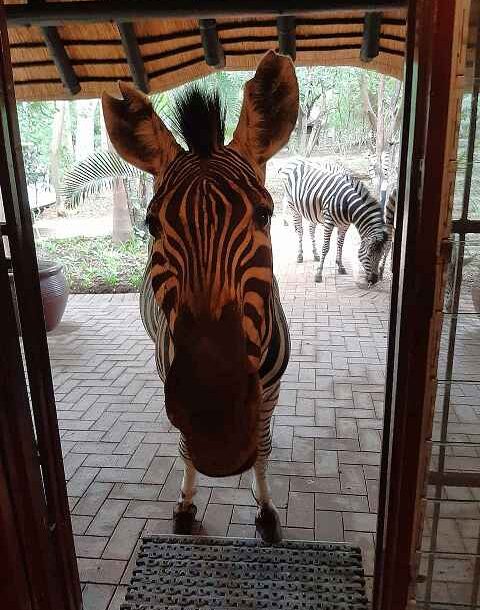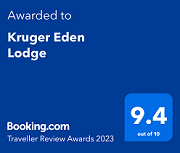
-
Buffel street 4457/4610
Marloth Park 1321
Mpumalanga
South Africa
Tel.: +27 (0)711961679
[email protected]

Part II: What and how to photograph?
Remember: Setting “P” is not for “Professional”!
In principle, you can photograph anything that seems interesting to you. Animals, landscapes, individual trees or plants. Some also collect the usual suspects, such as the Big 5. Photos in which people are in the picture with the animals are also popular, thus capturing the closeness and atmosphere.
Of course there is a difference between photographing an elephant and a butterfly. Therefore will be a separate news article for macro photography. The camera system is not so crucial, but rather the right choice of lenses. Here are a few recommendations for choosing the right lens:
Insects: macro lenses approx. 100 to 150 mm
Small birds: fixed focal lengths approx. 500-600 mm
Dynamic situations: fast zoom lenses with focal lengths of 70-300 mm
Medium animals: zoom lenses about 70-200 mm
Large animals: zoom lenses approx. 20-100 mm
Landscapes: wide-angle zoom lenses approx. 15-80 mm
In fact, one is somehow restricted on a game drive. When photographing animals, one often tries to photograph from a special or unusual perspective. But the perspective is clear here. You sit either in the car or in the open safari vehicle. Depending on where the animal is, you can photograph it from the front, above or below and from exactly the distance that the animal has to the road, because getting off or driving off-road is prohibited in Kruger Park. This is not a disadvantage, however, as this applies to all photographers equally, and zoom lenses are also flexible.
In addition to structural and material differences, there are essentially 3 factors that have a strong influence on the amount of light that ultimately reaches the sensor:
II.1. ISO (or ASA)
Indicates the sensitivity of the sensor to light. While this was actually a hardware property of film in the film days, it is now simply a default for image processing. Higher ISO numbers enable photography with less light, but this is often bought at the cost of quality losses, especially image noise. This does not mean that there are no differences in the light sensitivity of the sensors. On the contrary, these are actually quite significant. In contrast to film, however, this sensitivity is not preset to a specific value, but has the effect that with higher sensitivity of the sensor you can get by with less loss of quality with less light.
II.2. Aperture
The aperture value indicates how much the aperture is closed. The maximum aperture is virtually no aperture, the minimum aperture means that the aperture is closed to the maximum. In animal photography, the main reason you close the aperture is because it increases the depth of field. Depth of field means the area that is in sharp focus along the image axis. First of all, there is the focus point, which you set yourself or the camera automatically. The further in front and behind this point it is in focus, the greater the depth of field. However, one should not exaggerate, because aperture values above the optimum (usually around aperture 8 to 11) lead to diffraction blur.
II.3. exposure time
The exposure time is the time that the light (that is used for one image) falls on the sensor. The shorter the exposure time, the more static the object is imaged. Long exposure times lead to blurred images or traces of movement, which are sometimes desirable, e.g. with running water. On a game drive you might regulary use exposure times of 1/250 to 1/500, as you can not use a tripod and other people are moving in the car. When it comes to any movement on scene, you might need something from 1/1.000 sec to 1/2.000 sec.
All 3 factors mentioned above influence each other in an antagonistic way and must be set differently for each motive and each situation. In fact, choosing the best compromise for each photo is an art. A wildlife situation where you have the freedom to manually set all 3 factors to the optimum is rare. Stopping down for more depth of field can be compensated for with a higher ISO and longer exposure time, for example, but then you have more image noise and possibly blurring. You can freeze fast movements with a very short exposure time, but then you have to compensate for this with an open aperture and a higher ISO number, with the disadvantages mentioned above. Here are a few suggestions (strongly depending on the camera system and the situation). Most of these can also be quickly selected via presets or function buttons/wheels:
Fast motifs (camera freely movable):
Aperture: open
Exposure time: less than 1/1,000 second
ISO: Auto
Quiet subjects with maximum sharpness (camera steady):
Aperture: stopped down 3-5 stops
Exposure time: Auto
ISO: 200 to 400
Hand-held macro shots:
Aperture: 8-11
Exposure time: max. 1/200 (+ flashes)
ISO: 200 to 400
Buffel street 4457/4610
Marloth Park 1321
Mpumalanga
South Africa
Tel.: +27 (0)711961679
[email protected]
Buffel street 4457/4610
Marloth Park 1321
Mpumalanga
South Africa
Tel.: +27 (0)711961679
Fax: +27 (0)711961679
[email protected]

| Cookie | Duration | Description |
|---|---|---|
| cookielawinfo-checkbox-analytics | 11 months | This cookie is set by GDPR Cookie Consent plugin. The cookie is used to store the user consent for the cookies in the category "Analytics". |
| cookielawinfo-checkbox-functional | 11 months | The cookie is set by GDPR cookie consent to record the user consent for the cookies in the category "Functional". |
| cookielawinfo-checkbox-necessary | 11 months | This cookie is set by GDPR Cookie Consent plugin. The cookies is used to store the user consent for the cookies in the category "Necessary". |
| cookielawinfo-checkbox-others | 11 months | This cookie is set by GDPR Cookie Consent plugin. The cookie is used to store the user consent for the cookies in the category "Other. |
| cookielawinfo-checkbox-performance | 11 months | This cookie is set by GDPR Cookie Consent plugin. The cookie is used to store the user consent for the cookies in the category "Performance". |
| viewed_cookie_policy | 11 months | The cookie is set by the GDPR Cookie Consent plugin and is used to store whether or not user has consented to the use of cookies. It does not store any personal data. |